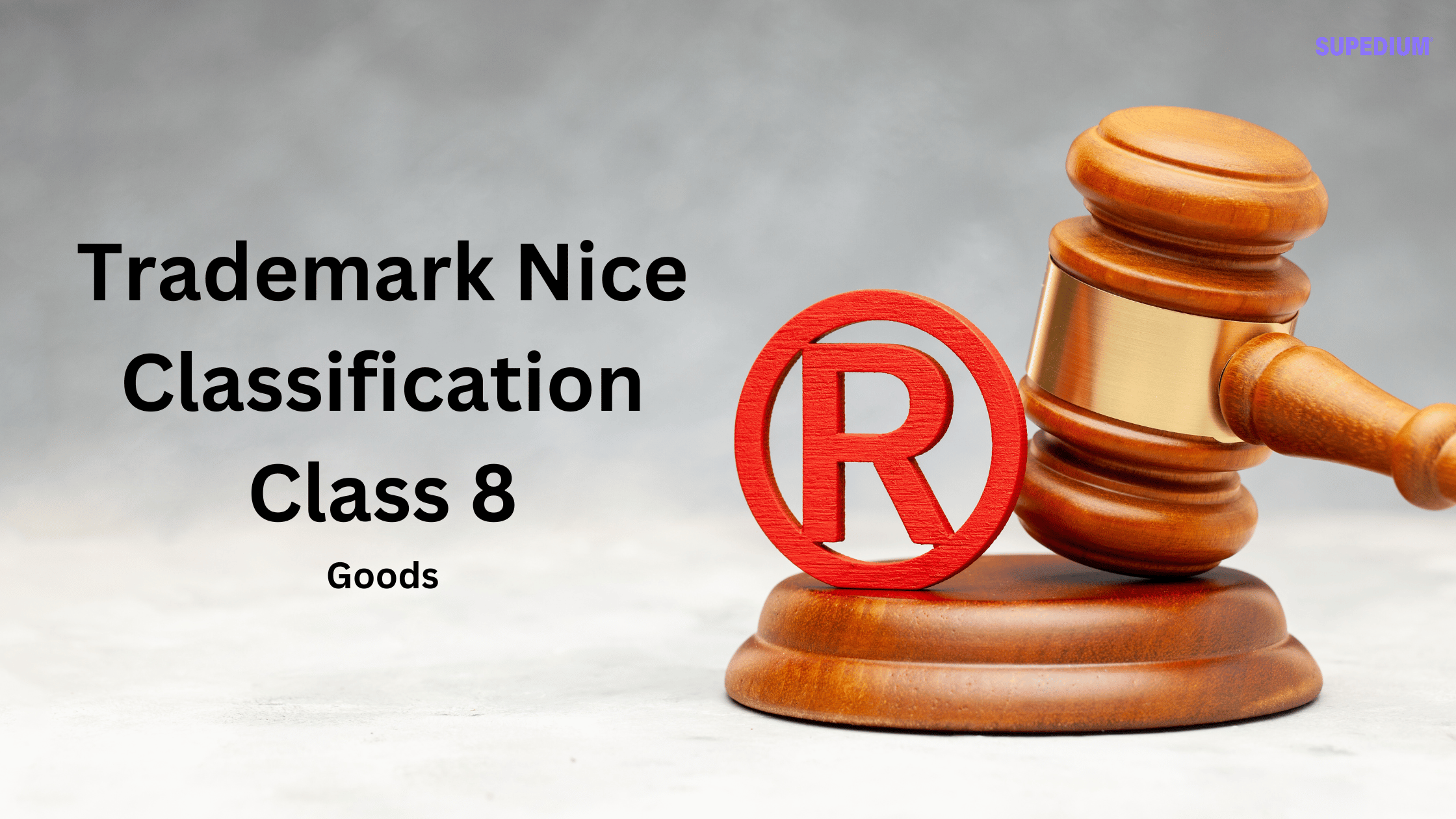Table of Contents
![]()
I. Introduction
The Nice Classification, established by the Nice Agreement (1957), is an international system used to categorize goods and services for the registration of trademarks. This classification system helps businesses and legal entities navigate the complexities of trademark registration by organizing various products and services into specific classes. Among these, Class 8 holds significant importance as it encompasses a wide range of hand-operated tools and implements, essential for various industries and personal use.
II. Key Components of Class 8
A. General Description
Class 8 primarily includes hand-operated tools and implements designed for performing specific tasks such as drilling, shaping, cutting, and piercing. These tools are integral to various sectors, including agriculture, crafts, personal grooming, and culinary arts. The classification emphasizes tools that rely on manual operation rather than motor-driven mechanisms.
B. Categories of Items
Class 8 is divided into several key categories:
- Hand-Operated Agricultural, Gardening, and Landscaping Tools: These tools facilitate tasks related to planting, maintaining, and harvesting crops, as well as designing and caring for landscapes.
- Tools for Carpentry, Artistry, and Crafts: This category includes a variety of implements used by carpenters, artists, and craftspersons, such as hammers, chisels, and gravers.
- Personal Grooming Implements: Class 8 covers tools for personal grooming and body art, including razors, hair curling devices, and tools for manicures and pedicures.
- Hand-Operated Pumps: These tools are essential for various applications, including fluid transfer in both domestic and industrial settings.
- Table Cutlery: This includes items such as knives, forks, and spoons, even those crafted from precious metals, used in dining settings.
III. Specific Examples within Class 8
A. Hand-Operated Agricultural and Gardening Tools
Hand-operated agricultural and gardening tools play a vital role in the cultivation and maintenance of plants. Examples include shovels, hoes, and pruning shears, which are essential for planting, weeding, and harvesting. These tools are crucial for both small-scale gardeners and large agricultural operations, enabling effective crop management and sustainability.
B. Tools for Crafts and Artistry
Craftspeople rely heavily on tools in Class 8 for their creative endeavors. Items such as hammers, chisels, and gravers are indispensable for carpentry and artistry. These tools allow artisans to shape and refine materials, contributing to the creation of unique and functional works. Their importance extends beyond traditional craftsmanship to modern art forms as well.
C. Personal Grooming Tools
Personal grooming implements found in Class 8 are essential for maintaining hygiene and aesthetic appearance. Razors for shaving, tools for hair curling, and implements for manicures and pedicures are popular examples. Additionally, body art tools, such as tattoo machines and accessories, are included in this category, reflecting the diverse needs of personal grooming.
D. Hand-Operated Pumps
Hand-operated pumps are versatile tools used for transferring liquids in various contexts. These pumps are commonly used in gardening to irrigate plants or in household settings for moving water. They are favored for their simplicity and effectiveness, particularly in scenarios where electric pumps may not be feasible.
E. Table Cutlery
Table cutlery, including knives, forks, and spoons, is an essential part of dining culture worldwide. Class 8 includes cutlery made from various materials, including stainless steel and precious metals, highlighting their functional and aesthetic value. These items not only serve practical purposes but also contribute to the presentation of meals.
IV. Exclusions from Class 8
A. Items Not Included
While Class 8 covers a wide range of hand tools and implements, certain items are explicitly excluded:
- Machine Tools (Class 7): Tools powered by motors fall into a different category, emphasizing the manual operation principle of Class 8.
- Surgical Cutlery (Class 10): Items used in medical settings are classified separately to reflect their specialized use.
- Specific Pumps (Class 12 and Class 28): Pumps designed for specific applications, such as bicycle tires or sports equipment, are excluded.
- Firearms and Fencing Weapons (Class 13 and Class 28): These items do not fit within the scope of Class 8, as they involve entirely different functionalities.
- Office Supplies (Class 16): Items like paper knives and shredders are categorized differently, focusing on their office use.
- Kitchen Utensils (Class 21): Serving utensils and general kitchen tools are excluded as they do not fit the definition of hand-operated tools and implements in Class 8.
B. Importance of Understanding Exclusions
Understanding the exclusions within Class 8 is crucial for trademark applicants. Misclassification can lead to legal complications and may jeopardize the trademark registration process. Businesses should ensure they categorize their products accurately to avoid potential disputes or rejections.
V. Practical Considerations for Trademark Registration
A. Steps for Registering Under Class 8
- Research and Identification: Before applying for a trademark, businesses should conduct thorough research to identify which tools and implements fall under Class 8.
- Compliance with Trademark Regulations: Familiarizing oneself with trademark laws and regulations is essential to ensure a smooth registration process.
B. Importance of Proper Classification
Proper classification is vital for legal protection and effective market positioning. A well-categorized trademark not only safeguards a brand’s identity but also enhances its visibility and credibility in the marketplace.
VI. Conclusion
In summary, Class 8 of the Nice Classification system plays a significant role in organizing hand-operated tools and implements for trademark registration. By understanding the components, specific examples, and exclusions of Class 8, businesses can navigate the trademark process more effectively. As the importance of accurate classification becomes increasingly clear, consulting with professionals in trademark law is highly advisable for those seeking to protect their brands in a competitive market.
Share This





Be the first to comment